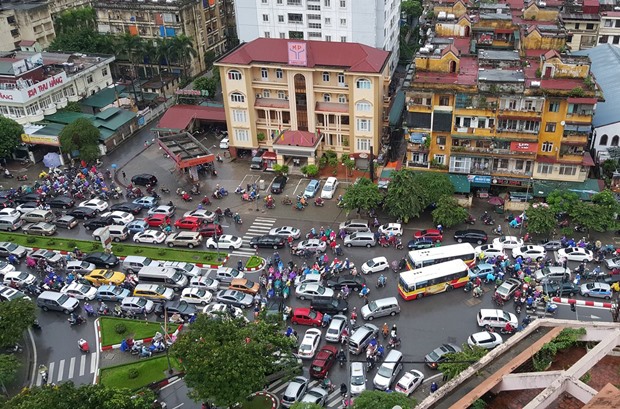 Society
Society

Việt Nam should develop an integrated system of public transport as part of measures to ensure sustainable transport development, according to experts.
 |
| Việt Nam should develop an integrated system of public transport as part of measures to ensure sustainable transport development, according to experts.— Photo chungta.vn |
HÀ NỘI — Việt Nam should develop an integrated system of public transport as part of measures to ensure sustainable transport development, according to experts.
Transport Cluster Leader of the World Bank in Việt Nam Jen Jungeun Oh made the statement at a dialogue held by the World Bank on Friday in Hà Nội on sustainable transport, saying that improving infrastructure and capacity were not the sole solutions but developing an integrated system of public transport was key.
“The system should consist of various types of modes. Its backbone is the mass transport public system that has high capacity and high speed to serve the main urban corridor of the city. But it should be complemented by other modes that are more flexible and low capacity,” she said.
It should also accompanied with better non-motorised transport connectivity such as walking and bicyles and all should be simply connected with the mass public transport system, she added.
A challenge for Việt Nam was the dominance of motorbike users, she said, adding that it created tough competition for public transport because motorbikes were affordable and convenient.
However, safety issues, air pollution and hot weather have led to a drop in the use of motorbikes in Việt Nam, giving room to develop public transport systems, she said.
Agreeing, Khuất Việt Hùng, Executive Vice Chairman of the National Committee of Traffic Safety, said that there was a fixed mindset of both Vietnamese people and authorities of using motorbikes.
Although using motorbikes had disadvantages many people still preferred them, he said. A survey revealed that 70 per cent of traffic accidents were caused by motorbikes and motorbike users accounted for 80 per cent of victims of traffic accidents.
He pointed to the need to develop a high-quality bus system, improve infrastructure for buses and create a public transport habit among people.
Jen Jungeun Oh said: “When you change from using motorbike-oriented way of moving around the city to the public transport-based mobility, one of the most prominent changes is to increase the need of walking and use of non-motorised transport”.
“The walking system is not good. The sidewalks are narrow and occupied by parked vehicles and commercial activities,” she said.
However, she noted that the situation could be improved by developing major public transport corridors, around which authorities could gradually better control parked vehicles on sidewalk by providing alternative parking space.
One important measure was to change the mindset of locals, she said.
“Currently, on Vietnamese streets, the bigger the vehicle is, the higher in the hierarchy it is. Meanwhile, pedestrians, the most vulnerable users of transport, are put aside. They have bad and unpleasant travelling experiences,” she said.
“We need to reverse this. The most vulnerable users of transport such as pedestrians should be given the highest hierarchy on streets, then comes public transport and then other means of transport,” she said.
Hùng from the National Traffic Safety Committee said the recent campaign to clear pavements of illegally parked cars, motorbikes, shops, extended canopies and other obstructions in some big cities was an effective measure to limit personal vehicles.
Both Jen Jungeun Oh and Hùng noted that using technology was also very important in transport management.
The recent use of iParking technology for car parking in Hà Nội, for example, helped improve urban transport management, Hùng said. Information relating to some car parks is available online, and car owners are able to find and book parking spaces in advance on devices such as smartphones and tablets.
Oh said that many countries had utilised big data in transport management as many people used smartphones while vehicles have Global Positioning System (GPS) but a lot of investment and manpower is needed to fully utilise the data.
Another problem in transport management is planning.
Hùng said transport planning should be dynamic and some planning was too “big”, making it hard to implement while some planning was low quality.
Oh suggested that Việt Nam move to transit-oriented development to help develop sustainable transport.
It was important to integrate land use planning with transport development planning, she said.
"The private sector should implement development projects while the Government set the vision and provide guidelines to make sure the implementation of development or construction projects follows planning," she said.
“It is also necessary to carefully assess impacts of development and construction projects on transport and private developers of such projects should contribute in forms of public transport and public space,” she said.
Hùng proposed legal regulations to assess transport impacts of urban development plans. — VNS




